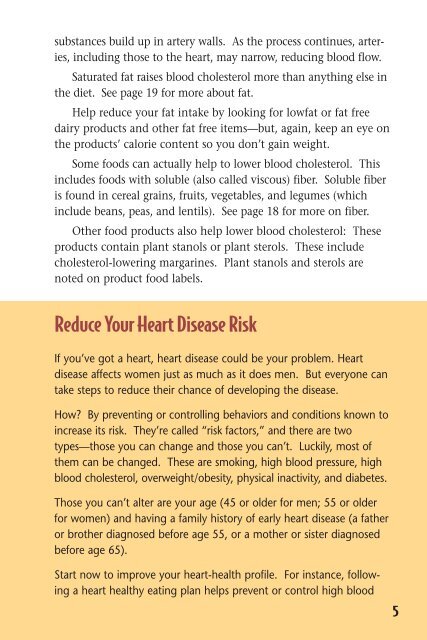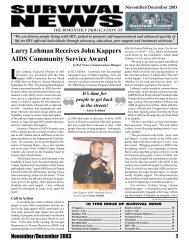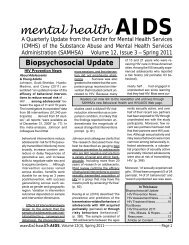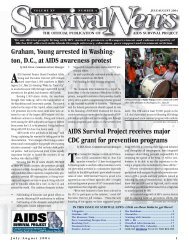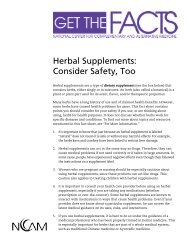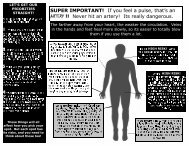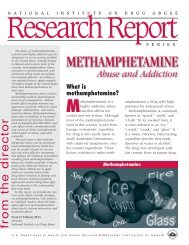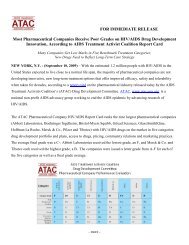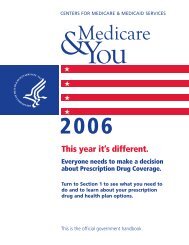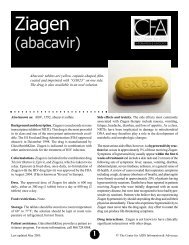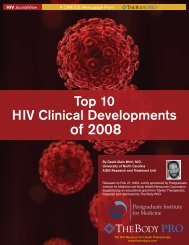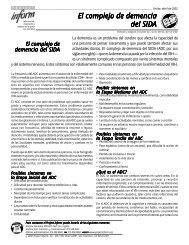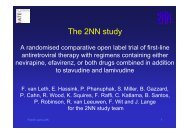Keep the Beat: Heart Healthy Recipes - National Heart, Lung, and ...
Keep the Beat: Heart Healthy Recipes - National Heart, Lung, and ...
Keep the Beat: Heart Healthy Recipes - National Heart, Lung, and ...
Create successful ePaper yourself
Turn your PDF publications into a flip-book with our unique Google optimized e-Paper software.
substances build up in artery walls. As <strong>the</strong> process continues, arteries,<br />
including those to <strong>the</strong> heart, may narrow, reducing blood flow.<br />
Saturated fat raises blood cholesterol more than anything else in<br />
<strong>the</strong> diet. See page 19 for more about fat.<br />
Help reduce your fat intake by looking for lowfat or fat free<br />
dairy products <strong>and</strong> o<strong>the</strong>r fat free items—but, again, keep an eye on<br />
<strong>the</strong> products’ calorie content so you don’t gain weight.<br />
Some foods can actually help to lower blood cholesterol. This<br />
includes foods with soluble (also called viscous) fiber. Soluble fiber<br />
is found in cereal grains, fruits, vegetables, <strong>and</strong> legumes (which<br />
include beans, peas, <strong>and</strong> lentils). See page 18 for more on fiber.<br />
O<strong>the</strong>r food products also help lower blood cholesterol: These<br />
products contain plant stanols or plant sterols. These include<br />
cholesterol-lowering margarines. Plant stanols <strong>and</strong> sterols are<br />
noted on product food labels.<br />
Reduce Your <strong>Heart</strong> Disease Risk<br />
If you’ve got a heart, heart disease could be your problem. <strong>Heart</strong><br />
disease affects women just as much as it does men. But everyone can<br />
take steps to reduce <strong>the</strong>ir chance of developing <strong>the</strong> disease.<br />
How? By preventing or controlling behaviors <strong>and</strong> conditions known to<br />
increase its risk. They’re called “risk factors,” <strong>and</strong> <strong>the</strong>re are two<br />
types—those you can change <strong>and</strong> those you can’t. Luckily, most of<br />
<strong>the</strong>m can be changed. These are smoking, high blood pressure, high<br />
blood cholesterol, overweight/obesity, physical inactivity, <strong>and</strong> diabetes.<br />
Those you can’t alter are your age (45 or older for men; 55 or older<br />
for women) <strong>and</strong> having a family history of early heart disease (a fa<strong>the</strong>r<br />
or bro<strong>the</strong>r diagnosed before age 55, or a mo<strong>the</strong>r or sister diagnosed<br />
before age 65).<br />
Start now to improve your heart-health profile. For instance, following<br />
a heart healthy eating plan helps prevent or control high blood<br />
5


